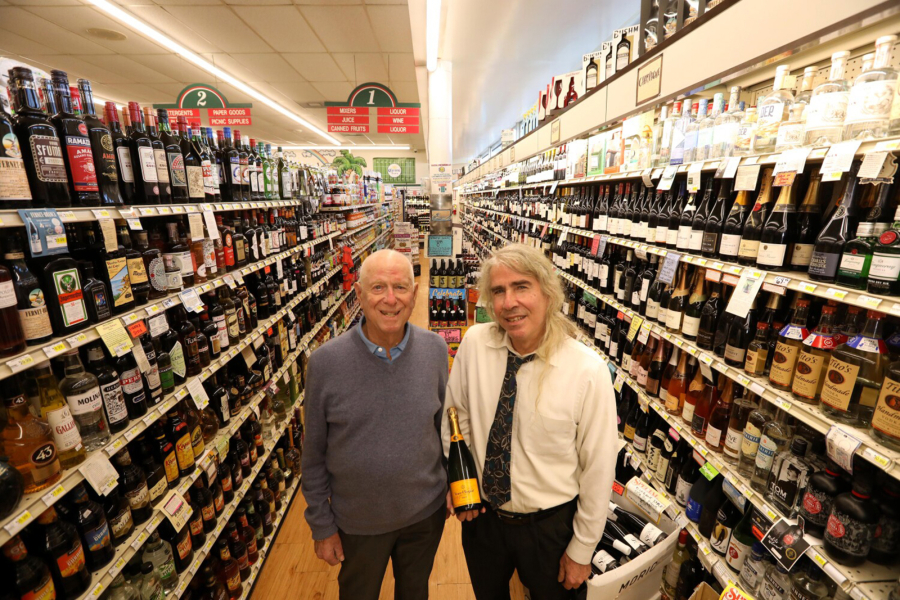At Bob’s Market in Santa Monica, Calif., liquor and wine buyer Rick Rosenbloom hefted a 750-milliliter bottle of Veuve Clicquot Brut, one of the store’s most popular brands of Champagne.
“A month ago, this was selling for $52 a bottle,” Rosenbloom said Wednesday. “Today, it’s $69.99, and we’re losing money on it.”
It’s not your imagination. Supply-chain problems as well as higher energy and material costs mean that traditional year-end holiday liquor runs are putting a much bigger dent in your wallet than in 2020.
And that’s if you’re lucky enough to find your favorite libations. Empty shelves are common for the most popular brands of wine, beer and spirits, with alcoholic beverages running about 11 percent out of stock in U.S. stores as of Nov. 28, according to data provider IRI Worldwide.
Alcohol demand has been strong since the COVID-19 pandemic began, and prices have risen, although competition has kept a lid on sticker shock, industry experts say.
In November, consumers paid nearly 1 percent more for alcoholic beverages than a year earlier, according to Labor Department data released Friday. Overall, the consumer price index jumped a higher-than-expected 6.8 percent from November 2020, the highest annual inflation rate since 1982, mainly because of food, energy and housing.
But people who make and import wine, beer and other beverages report that material shortages and rising costs mean more price increases probably are on the way.
“Right now, nobody wants to raise their prices. We have not raised our prices. The trend has been (to) absorb this as long as possible,” said Ryan Friesen, head distiller for the Blinking Owl Distillery in Santa Ana, which uses California organic grain to make its products, including vodka, gin, whiskey and aquavit.
“That will come to an end. It has to,” said Friesen, vice president of the California Artisanal Distillers Guild. “If we’re absorbing an extra — and I’m not kidding — 100 percent increase in our freight costs, for example, we can’t take that hit forever.”
Friesen’s advice: “Get your spirits while you can, because prices are going to have to go up.”
It’s been a challenge even for industry veterans such as Rosenbloom, 66. He handles all alcoholic beverage stocking for his 89-year-old father, Bob, who opened the independent store in 1965.
Rick Rosenbloom is like that neighborhood guy who always knows when it’s about to rain before anyone else does. When it comes to supply problems or increased costs, Rosenbloom said, “I can smell it coming,” which helped the Ocean Park-area market stock up to avoid the worst of the year-end crunch.
The litany of problems driving price increases has become familiar: a snarled supply chain causing delays and boosting shipping rates, higher fuel expenses and other costs, and shortages of bottles, cans and other materials.
“The spirits industry, like numerous others, is being impacted by shortages of glass, pallets, containers and (truck) drivers,” said Lisa Hawkins, senior vice president for public affairs at the Distilled Spirits Council of the United States.
Big beverage companies have been warning that prices are headed up.
At Constellation Brands Inc., whose brands include Corona and Modelo beers and Robert Mondavi wines, Chief Executive Bill Newlands said during a Nov. 30 investor conference that “in the next three to six months, we’re probably going to see mid-single-digit inflationary pressures” because of factors including higher glass and shipping costs.
In October, Campari CEO Bob Kunze-Concewitz told Bloomberg Television that the Italian firm will be “more aggressive” on pricing because of supply-chain problems and higher shipping costs. “We have to respond to this, because the pressures have really increased,” Kunze-Concewitz said.
Glass and metal are two components hit hard by the COVID-19 pandemic, said Paul Hughes, a chemist and assistant professor of distilled spirits at Oregon State University.
“The shortage of glass and certain metals must be because of the sheer quantity of materials needed to make, contain and deliver vaccines for COVID-19,” Hughes said.
Hawkins of the Distilled Spirits Council said switching to a boring bottle isn’t an option in a market in which the container often is a form of mass-produced art and a key brand statement.
“The custom bottles, unique labels and premium packaging are a big part of the overall marketing of spirits products,” she said. “Luxury spirits bottles are often showcased on home bar carts or presented as special, one-of-a-kind gifts.”
Even moving to a smaller bottle to deal with product shortages is no simple matter, Hawkins said. “Changes to glass bottles often require a change of labels, closures and packaging,” she said.
Bob’s Market — Veuve Clicquot notwithstanding — has held some prices steady thanks to Rick Rosenbloom’s early warning system of suppliers and brokers, some of whom he has been working with for decades. One example is a New Zealand Sauvignon Blanc from winemaker Oyster Bay, of which he still has ample supply and hasn’t raised the $11.99-a-bottle price.
“I was buying about half a pallet every three weeks, but as 2021 was going down the pike here, by last summer, I start smelling it: a couple of my smaller New Zealand wines becoming unavailable,” Rosenbloom said.
“And I thought, ‘You know what? I should probably start piling on some more Oyster Bay,’ and I got ahead on it. And it’s a good thing I did because soon enough, now my supplier is out of it. That’s just one category, but for us, it’s a very big category.”
“Prices have gone up tremendously on the merchandise that we use for supplies,” said Bob Rosenbloom, who has been in the grocery business since the 1940s. “The only way we can overcome that is raising some prices, so it’s creating more inflation. That’s our biggest issue.”



